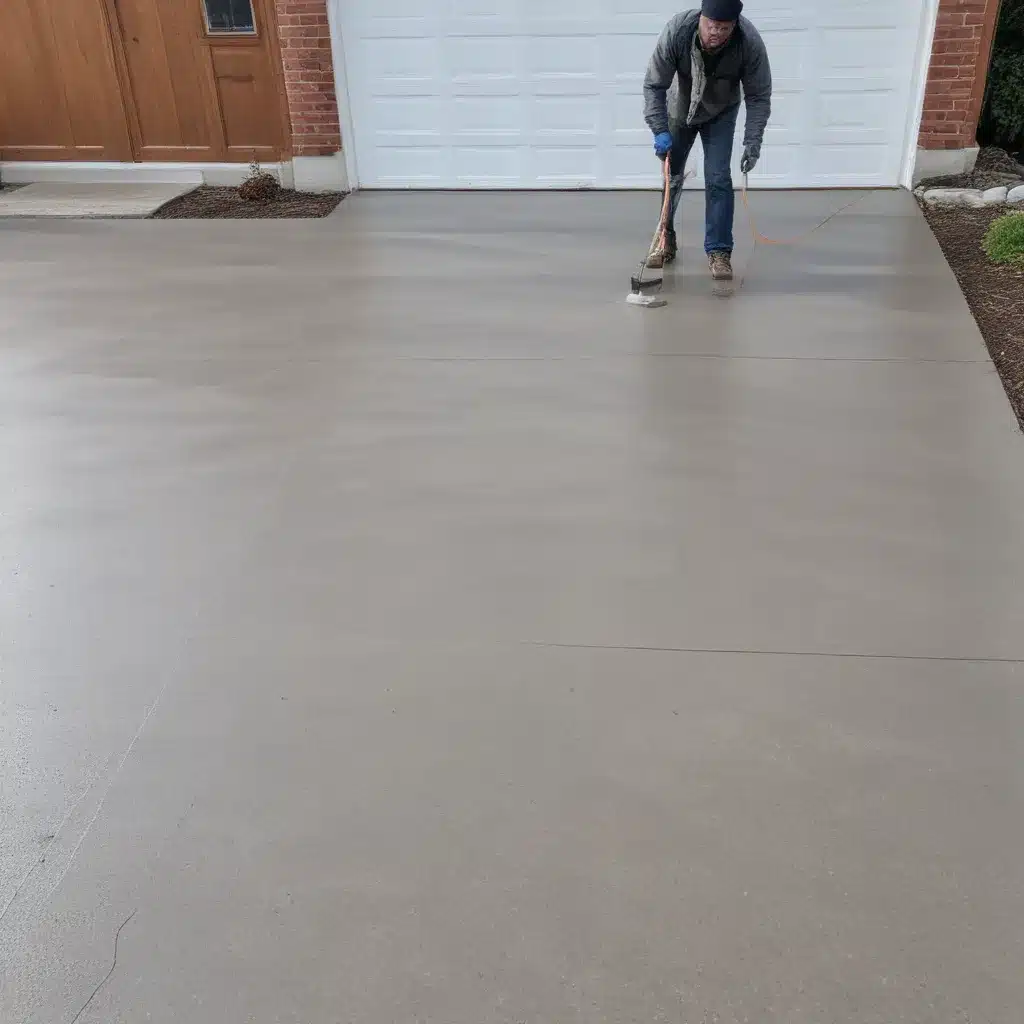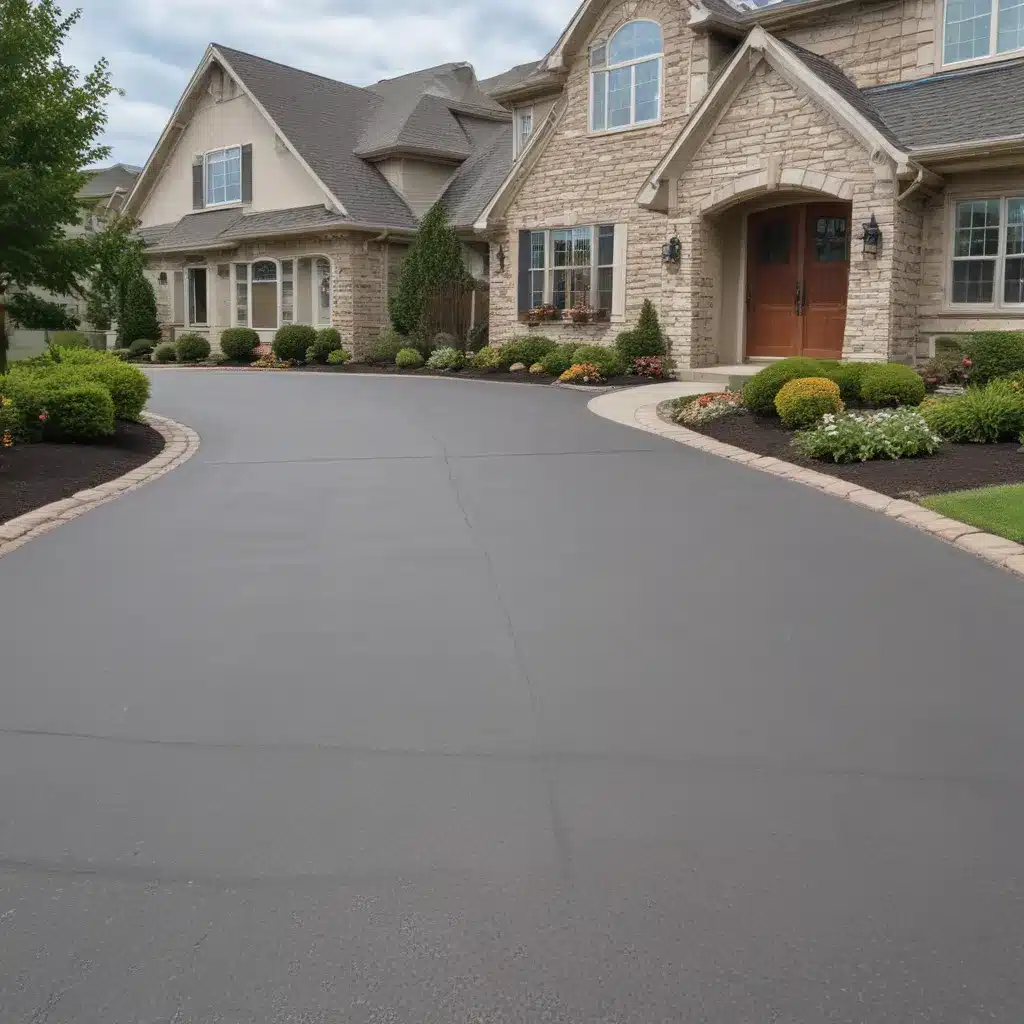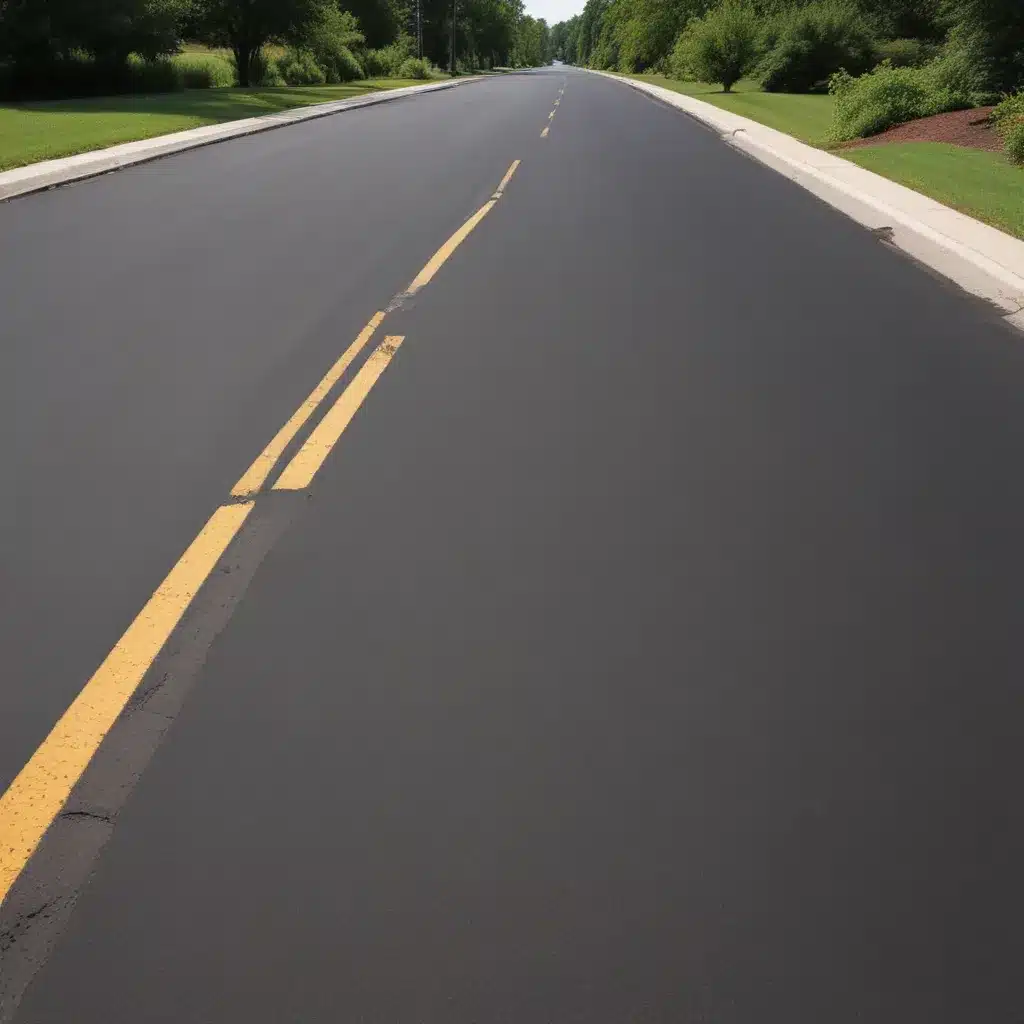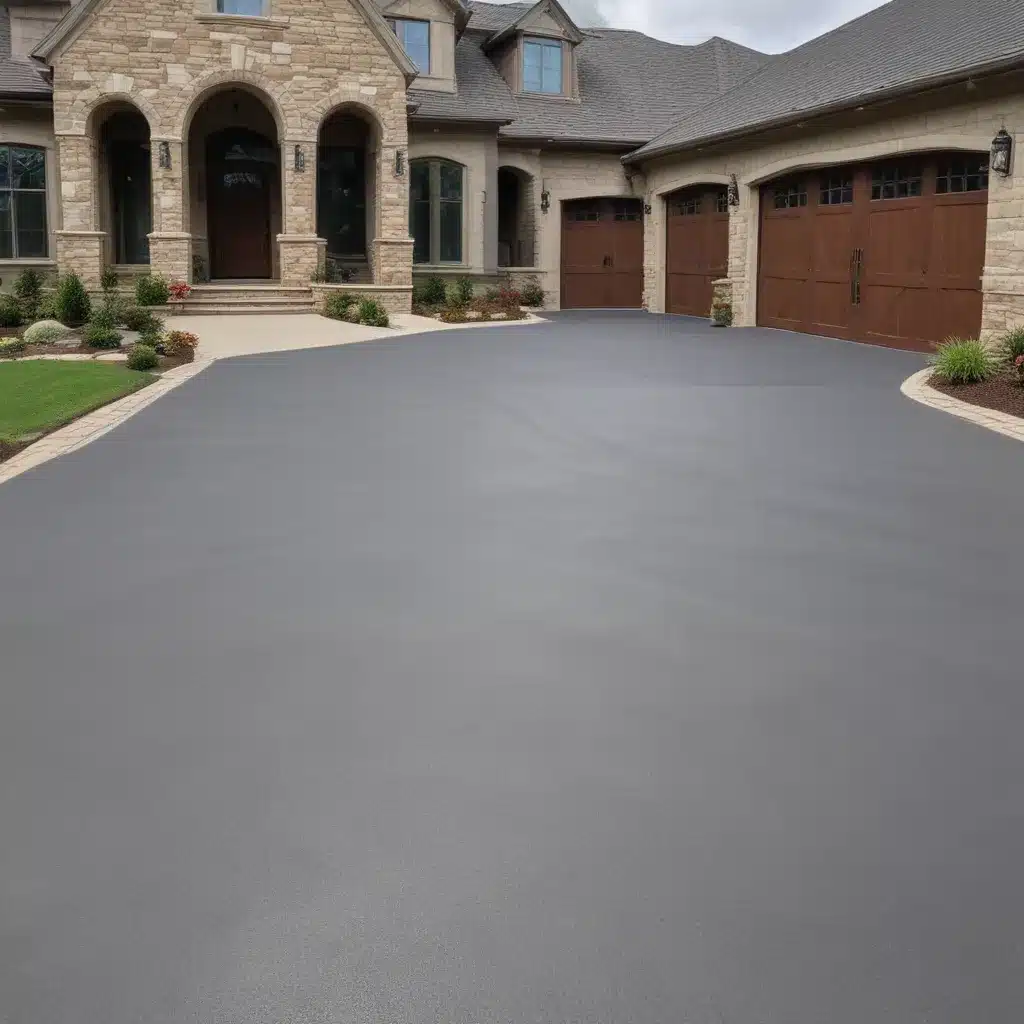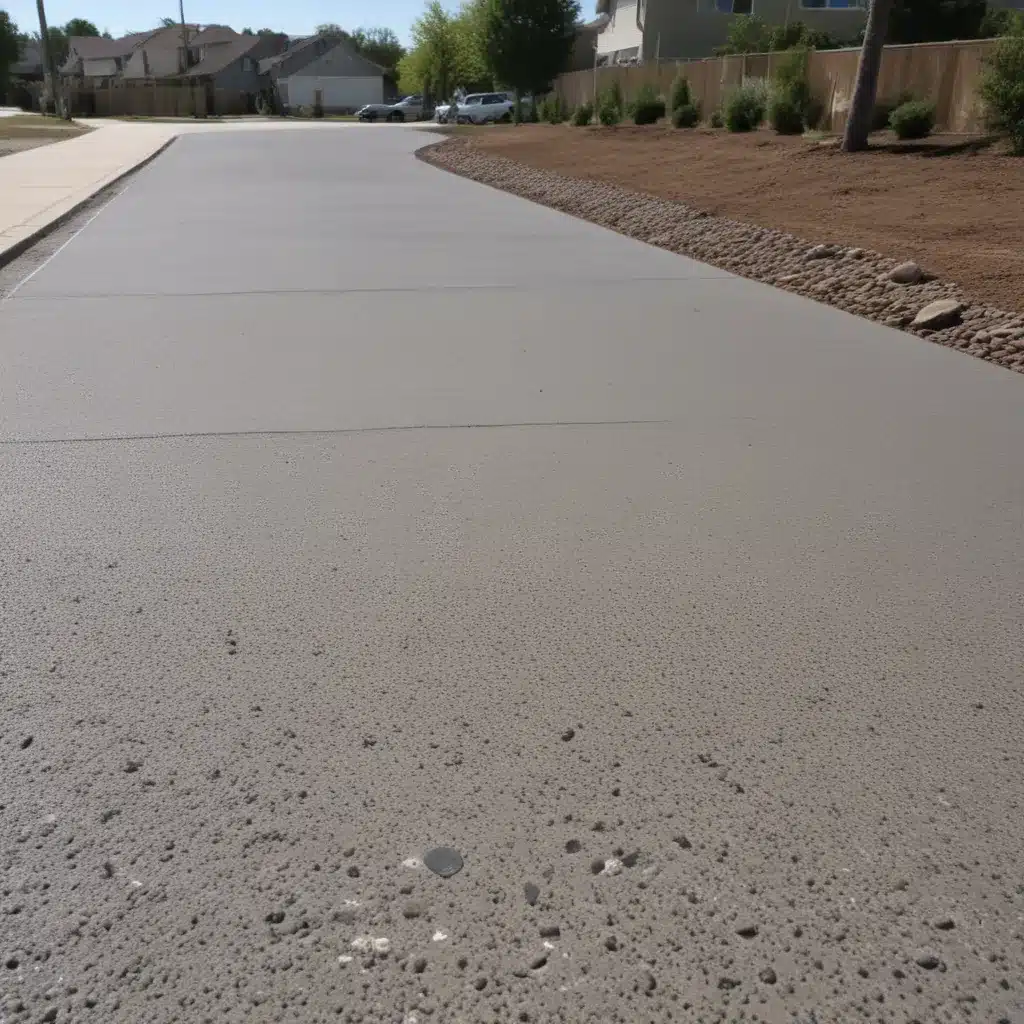The Importance of Concrete Driveway Sealing
As the days grow shorter and the air starts to turn crisp, it’s time to start thinking about winterizing our homes. One often overlooked task is sealing our concrete driveways before the cold, harsh elements of winter arrive. I know, I know – it’s not the most glamorous chore on the to-do list. But trust me, taking the time to properly seal your driveway can save you a lot of headaches (and money) down the road.
You see, concrete is a porous material. Over time, it can become susceptible to cracking, crumbling, and deterioration, especially when exposed to the freeze-thaw cycles that are common during the winter months. When water seeps into the concrete and then expands as it freezes, it creates cracks and pits that can worsen with each passing season. Before you know it, you’re dealing with a driveway that looks like the surface of the moon.
But fear not, my friends! By sealing your concrete driveway, you create a protective barrier that helps lock out the damaging effects of winter weather. It’s like wrapping your driveway in a cozy winter coat to shield it from the elements. And the best part? It’s a relatively inexpensive and easy task that you can tackle yourself, even if your DIY skills are a bit…shall we say, limited.
The Sealing Process: A Step-by-Step Guide
Alright, let’s dive into the nitty-gritty of sealing your concrete driveway. First and foremost, you’ll want to make sure your driveway is clean and free of any debris, oil stains, or other contaminants. This can be done with a good old-fashioned scrub brush and some degreaser. Trust me, taking the time to properly clean the surface will ensure the sealant adheres properly.
Once your driveway is sparkling clean, it’s time to get out the sealant. There are a few different types to choose from, each with its own benefits. Acrylic-based sealants are a popular choice, as they provide a clear, glossy finish and decent protection against the elements. Epoxy-based sealants, on the other hand, offer a bit more durability and resistance to cracking and peeling.
Now, the application process itself is fairly straightforward. Simply pour the sealant onto the driveway and use a roller or brush to spread it evenly across the surface. Be sure to work in manageable sections and pay close attention to any cracks or crevices that may need a little extra love. And don’t forget to let the sealant fully cure before driving on it – usually around 24 to 48 hours, depending on the product.
The Benefits of a Sealed Driveway
Alright, so we’ve covered the “how-to” – but what’s the big deal about sealing your driveway, anyway? Well, my friends, the benefits are plentiful. First and foremost, a properly sealed driveway can significantly extend its lifespan. By creating that protective barrier, you’re helping to prevent the kind of damage that can lead to costly repairs or even full-blown replacement down the line.
But the benefits don’t stop there. A sealed driveway is also easier to maintain and clean. Those pesky oil stains and tire marks that can be such a pain to scrub away? They’ll be a lot less stubborn on a sealed surface. And let’s not forget about the aesthetic appeal – a freshly sealed driveway can give your entire home a polished, well-cared-for look.
And let’s talk about the all-important safety factor. When winter rolls around, a sealed driveway is less prone to icing over, making it a much safer surface for walking and driving. No more slipping and sliding your way across an icy tundra. Instead, you’ll be able to navigate your driveway with confidence, knowing that the sealant has created a slip-resistant barrier.
Timing is Everything
Now, I know what you’re thinking – “But wait, shouldn’t I be sealing my driveway in the spring or summer, when the weather is nice?” Well, my friends, there’s a method to the madness. Sealing your driveway in the fall, before the first freeze, is actually the ideal time to do it.
You see, the sealant needs time to fully cure and harden before it can truly work its magic. If you wait until the spring, you’re running the risk of the sealant not having enough time to properly set before the harsh winter weather rolls in. By sealing in the fall, you’re giving the sealant the time it needs to create that protective layer that will keep your driveway looking its best all through the winter months.
And let’s not forget the practical considerations. Scheduling a sealant job in the spring or summer can be a bit of a nightmare, with contractors booked up and the weather not always cooperating. But in the fall, things tend to be a bit more manageable. You can beat the rush and ensure your driveway is ready to face the elements before the first snowflake falls.
Real-World Examples and Testimonials
Don’t just take my word for it, though. Let’s take a look at some real-world examples of the benefits of sealing a concrete driveway before winter.
Take the case of John and Mary, a lovely couple who live just down the street. They had been battling the ravages of winter on their driveway for years, watching helplessly as it slowly crumbled and cracked. But last fall, they decided to bite the bullet and have their driveway sealed.
“It was like night and day,” John told me, a gleam of pride in his eye. “We couldn’t believe the difference. Our driveway looked brand new, and we didn’t have nearly as much trouble with ice and snow as we did in previous years. It was definitely worth the investment.”
And then there’s the story of our neighbor, Sarah. She’s a busy working mom who doesn’t have a lot of time for home maintenance tasks. But when she saw how easy and affordable the driveway sealing process was, she knew she had to give it a try.
“I was a little nervous at first, but the contractor walked me through it step-by-step,” Sarah said. “And now, I don’t have to worry about my driveway cracking or deteriorating over the winter. It’s one less thing on my plate, and it gives me such peace of mind.”
Conclusion: Protecting Your Investment
At the end of the day, sealing your concrete driveway before winter is all about protecting your investment. That driveway is a crucial part of your home’s infrastructure, and it deserves the same care and attention as the roof over your head or the walls that keep you safe and warm.
By taking the time to properly seal your driveway, you’re not only ensuring its longevity, but you’re also enhancing the overall curb appeal and value of your property. It’s a small investment that can pay big dividends down the road.
So, as the leaves start to change and the air grows crisp, don’t forget to add “seal the driveway” to your pre-winter to-do list. Trust me, your future self will thank you. And who knows – maybe you’ll even be the envy of the neighborhood, with a driveway that looks like it was freshly paved, even in the dead of winter.
Happy sealing, my friends! And may your driveway be as smooth and pristine as the first snowfall of the season.

